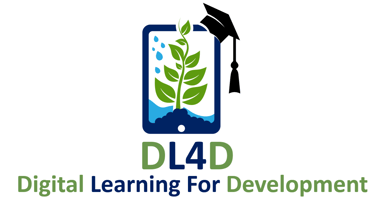Unlocking the Power of Buy Now Pay Later: A Game Changer for Consumers and Retailers
The importance of Buy Now Pay Later (BNPL) lies in its ability to offer consumers greater flexibility and convenience when making purchases, especially for larger-ticket items. By breaking down payments into manageable installments, BNPL makes it easier for people to afford products without the burden of paying the full price upfront. This financial flexibility has become especially significant in an era where budgeting and managing cash flow are essential, particularly for younger consumers who may not have access to traditional credit.

What is BNPL?
The payment industry has recently experienced a surge in the use of a payment method known as BNPL or Buy Now Pay Later. BNPL has arisen as a new way of payment, particularly in digital channels, where purchasers can acquire goods or services and pay for them later in convenient installment.
BNPL is also known as Point of sale credit, and some schemes give you 30 days to pay while others give you up to 12 months. BNPL arrangements are becoming more popular as a method of payment, particularly when shopping online.
How Buy Now, Pay Later works?
After you have finished shopping online and added items to your basket, you will need to decide how you will pay for your purchases. Online shops who offer a Buy Now Pay Later option do so as an alternative to paying the amount upfront, and the payment can be made with a debit card, credit card, PayPal, Apple Pay, Google Pay, or other associated payment method.
BNPL can be used not just for shopping online but also during over the counter (OTC) payments with merchants. Third-party BNPL providers give customers an additional payment option at checkout. The BNPL provider does a quick credit check, and when checkout is completed, they pay the merchant in full. The customer then pays the provider back in a series of installments.
With BNPL, you can pay an invoice within 30 days, spread the cost of a transaction over monthly interest-free installments, or split payments over several months with additional interest.
Standard BNPL services should be interest-free and don't require a credit check, so you won't have to worry about your credit score if you use them. However, there are BNPL choices that include additional interest payments as well as a complete credit check.
Types of BNPL available
There are two types of BNPL solutions:
1.Merchant transaction fee loan - One sort of point of sale loan does not charge the consumer any interest instead of charging the retailer a transaction fee
2.Shopper Interest loan - The other sort of BNPL is a point of sale loan, in which a third party provides the consumer with an on-the-spot loan. The customer can get the goods right away, but he or she will have to pay for it later, plus interest. The vendor is not charged anything.
How is BNPL different?
From credit cards or other types of Loans
Here is how BNPL differs from credit cards:
Transparent and low-cost pricing model: BNPL often uses a clear and low-cost pricing strategy since many of the offers are subsidized by companies to ensure that the client receives the most value for their money.
Completely digital and instant sign-up process: Anyone in any area of the country may sign up and use the service. Credit cards, on the other hand, take weeks to process and need a significant amount of documentation. With digital KYC, you can be authorized and start trading right away.
More easily accessible: Credit cards, according to experts, are for consumers with a good CIBIL score, those who live in urban areas, and those who are salaried. In India, just 30 million individuals use credit cards.
Higher interest rate: Credit cards are, without a doubt, the most costly kind of credit. Missed payment interest rates can reach 48 percent, whereas BNPL firms charge between 0 and 24 percent, depending on the merchant, term, and borrower.
Therefore, BNPL is really helpful for even low income population which achieves financial inclusion; by creating equality of accessing appropriate and affordable funds.
BNPL Industry Growth
In the previous two years, the Buy Now Pay Later market has grown dramatically. BNPL is now used by millions of buyers to finance their purchases. Meanwhile, major corporations are coming on board, with PayPal creating its own service, Amazon and Apple partnering up with Affirm, and Square agreeing to purchase Afterpay for $29 billion.
From 2021 to 2028, the worldwide buy now pay later market is predicted to grow at a CAGR of 22.4 percent, reaching USD 20.40 billion. The global buy now pay later market earned $90.69 billion in 2020, according to Allied Market Research, and is expected to reach $3.98 trillion by 2030, with a CAGR of 45.7 percent from 2021 to 2030.
In terms of revenue, Asia-Pacific contributed the most in 2020, accounting for about half of the entire market share, and is expected to maintain its dominance by 2030. Furthermore, Asia-Pacific is expected to have the highest CAGR of 47.8% throughout the projection period, due to increases in the cost of numerous household appliances such as smart TVs, music systems, and washing machines. Furthermore, the growing demand among youth in Asia-Pacific developing countries for buy now pay later platforms to acquire high-cost electronic gadgets like as smartphones, mobile tablets, and laptops is driving the expansion of the buy now pay later market in the region in the next years.
Over the projection period, the presence of a high number of buy now pay later service providers in the North American area is likely to generate development prospects for the regional market.
The apparel and garment category is predicted to expand the most in terms of end use throughout the projection period. BNPL services are extensively used by millennials to pay for apparel in installments.
Reasons for growth
The variety of benefits given by Buy Now Pay Later (BNPL) platforms, such as quick and interest-free payments, can be credited to the market's rise. When it comes to online buying, these platforms are becoming increasingly popular as the preferred payment method.
The industry is likely to develop as people become more aware of installment-based payment solutions. Furthermore, the absence of interest costs levied by BNPL platforms is likely to boost the market's development prospects.
Customers like to acquire items that allow them to pay in installments without incurring interest. As a consequence, businesses may use BNPL services to boost conversion rates. Merchants can also profit from these services, which include full and upfront payments, a greater average transaction value, a wider consumer base, and repeat transactions, among other things. Over the forecasted period, these factors are likely to generate development prospects for the market.
Why is it so popular?
As a result of the pandemic, many brick-and-mortar stores were forced to close temporarily, and consumers spent far more time at home. The expansion of internet purchasing was hastened as a result of this. Global e-commerce transactions totaled $4.6 trillion last year, increasing 19 percent from the previous year, according to a report from Worldpay, a payment processing business owned by FIS. BNPL was responsible for 2.1 percent of the total, or around $97 billion. According to Worldpay, this proportion is predicted to double to 4.2 percent by 2024.
According to a survey of 6,500 individuals done by Cardify in 2020, BNPL solutions have an essential part in influencing how much people spend over the holidays, with 44 percent of clients saying so. Furthermore, around 48% of consumers claimed that BNPL solutions allow them to spend 10% to 20% more than they would with a credit card.
According to a survey of over 3,000 U.S. adults performed by the Mercator Advisory Group in the first half of 2021, over 52 percent of clients aged 18-24 had utilized BNPL solutions in the previous year. BNPL is gaining popularity among the younger generation, which generally has limited financial means. Furthermore, internet customers utilize it more frequently than in-store shoppers.
By adding new consumers and growing their footprints, companies like Klarna, Afterpay, and Affirm have already paved the way for the ecommerce industry. According to Bank of America, by 2025, the market for these applications would have grown 10-15x, processing USD 650 billion to USD 1 trillion in transactions.
While Australia and Sweden were the top markets in the BNPL market a few years ago, the United Kingdom and the United States are rapidly coming up.
Contact us
Whether you have a request, a query, or want to work with us, use the form below to get in touch with our team.




